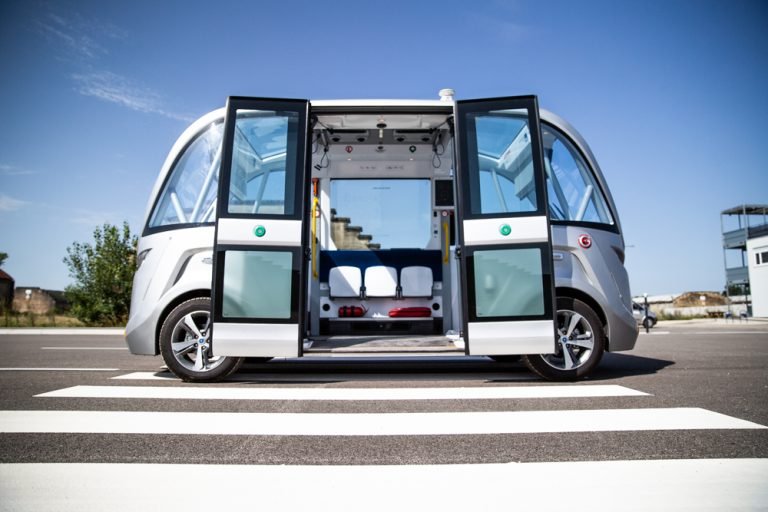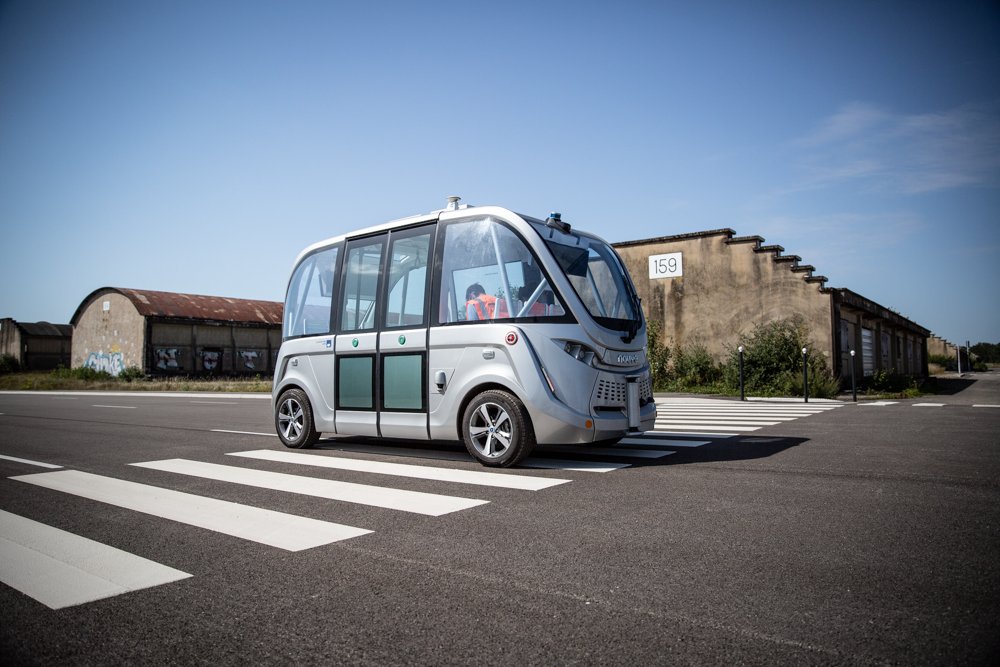The ENA project “Expérimentations de Navettes Autonomes” (Autonomous Shuttle Experiments) is one of the two winning projects for the EVRA (Experimentation of the Autonomous Road Vehicle) call for projects launched by the French government in 2018 as part of the national strategy for the development of autonomous vehicles. It is implemented by a consortium of 12 academics, industrials and territorial partners. It brings together 2 experiments and a methodological research work.
The first experiment deals with the mobility of the last mile by providing an autonomous shuttle service to complement of the existing urban transport network. The second experiment objective is to offer an on-demand mobility service to cover sparsely populated rural areas. The project aims to respond to the issue of mobility everywhere and for everyone, by putting the needs and expectations of users in terms of mobility at the heart of the project.
Framework
There are 5 levels of autonomous vehicle defines by the Society of Automotive Engineers (SAE) For the level 1, the driver is partially assisted with advance drive-assistance system (ADAS). To illustrate, the driver uses the adaptative cruise control but he directs the vehicle.
For the level 2, the driver is even more assisted in the vehicle driving, by using the lane keeping assist for example. The driver is at the wheel and he must be in control of the vehicle.
We talk about automatisation from the level 3: the driver entrusts driving in simple conditions, but human intervention is still required. For the level 4 and 5, is not in the loop anymore, i.e., the vehicle is autonomous without supervision needed. For the level 4, the drive is defined in controlled conditions, such as lanes dedicated to autonomous mobility. On the other hand, autonomous vehicles of the level 5 are able, in theory, to drive without supervision and have not driving position.
In china, the 3rd and 4th level of autonomous vehicles are part of standards and are already running in streets dedicated to autonomous mobility. In France, the first and second levels only are set up thanks to the implementation of ADAS.
As mentioned in the French strategy for the development of automated road mobility 2020-2022, published on December 2020, here is the aim: to prepare the implementation of autonomous, electric and shared mobility services on controlled environment from 2022, without human supervision (level 4) to answer to territories’ needed.
The ENA project aims to produce knowledge that will feed the common good and be shared with public authorities, socio-economic actors, communities and society to help the development of autonomous shuttles in the areas of safety, use and acceptability of systems and services.
Transpolis, member of the project, is the first location to experiment autonomous shuttles, upstream implementations. The conditions of testing are full similar of the reality and with several scenarios, we ensure the safety for future exploitations.

Crédit Photo : Sophie Jeannin – Université Gustave Eiffel.


